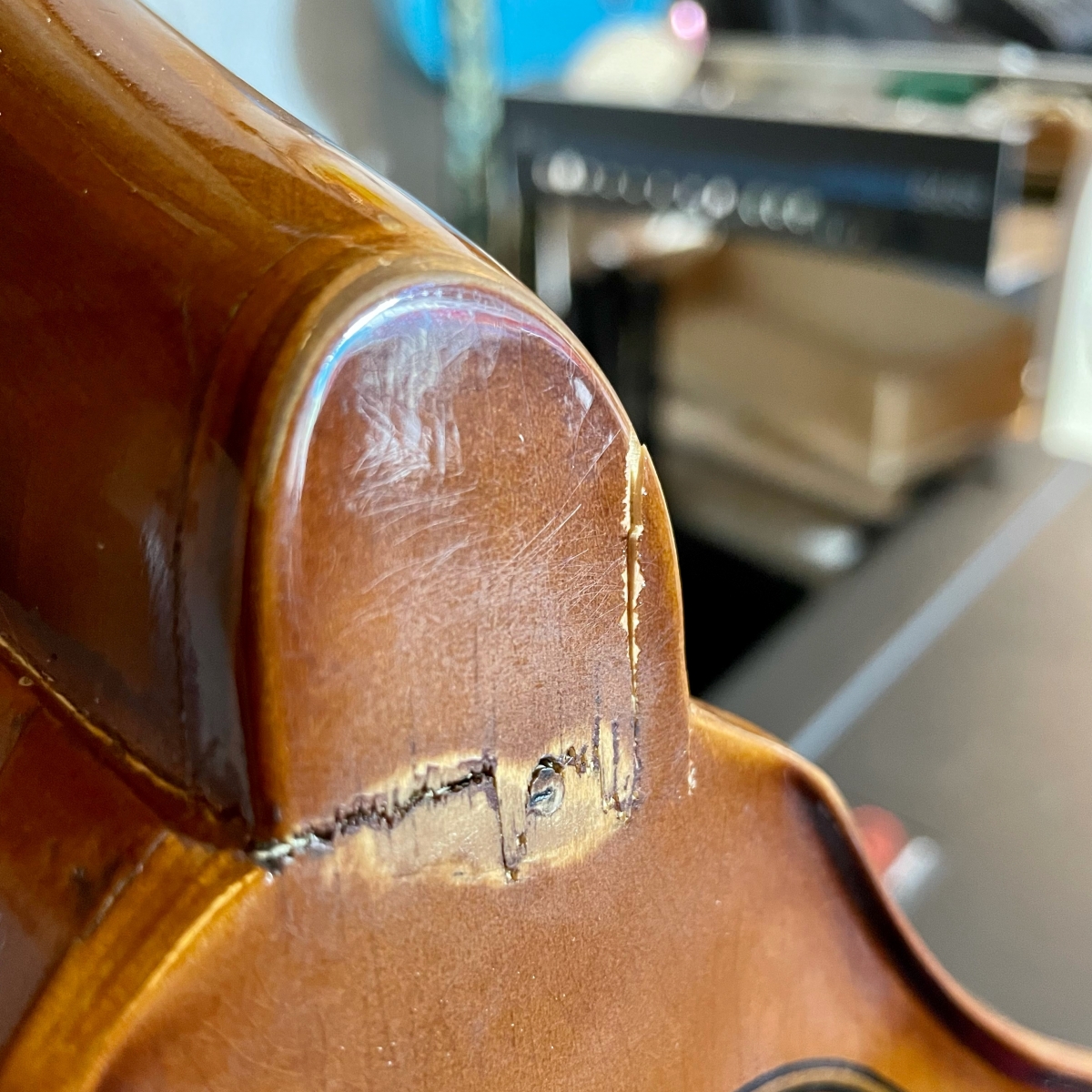
Drop
I dropped my bass the other night. It was in its heavily-padded bag, but it took a pretty solid hit to the back of the scroll on the cement. The glue line at neck joint is cracked, and the heal cap is splintered a bit, but it still holds tension. I can’t move the neck even when the string tension off, so I don’t think it’s super bad, but I plan to have it checked out before I play it again.
Just last week, I was looking for a new bag for my bass, as mine is getting a little long in the tooth. I was disappointed that I couldn’t find any bags with luggage wheels, which up until last night, was my favorite feature of my current bag.
As I loaded in for rehearsal, I was wheeling my bass by the handle on the peg head end of the bag. When I bent down to set down my amp, it slipped out of my hand and dropped about two feet to the concrete, making an alarmingly hard bonk as it hit.
Now this bag is the most heavily padded bass bag I have ever seen. It weighs nearly as much as my bass does. It’s heavy enough that putting the bass inside is much easier while it’s laying on the ground, rather than draping it around the bass while you are standing. I was pretty surprised the bag wasn’t able to absorb more of the impact.
I think I now see why wheels aren’t a popular feature for bass bags anymore. Going forward I will only be using the sling, backpack straps, and front handles that allow me to cradle it against my body.
Oh, a useful bit of information that was kind of hard to find: King Moretone double basses do indeed have a dovetail neck joint, and a fairly wide one at that. The same is true for American Standard basses made by the H.N. White Co. as well. Kay basses have dovetail joints, but with a much more shallow angle.